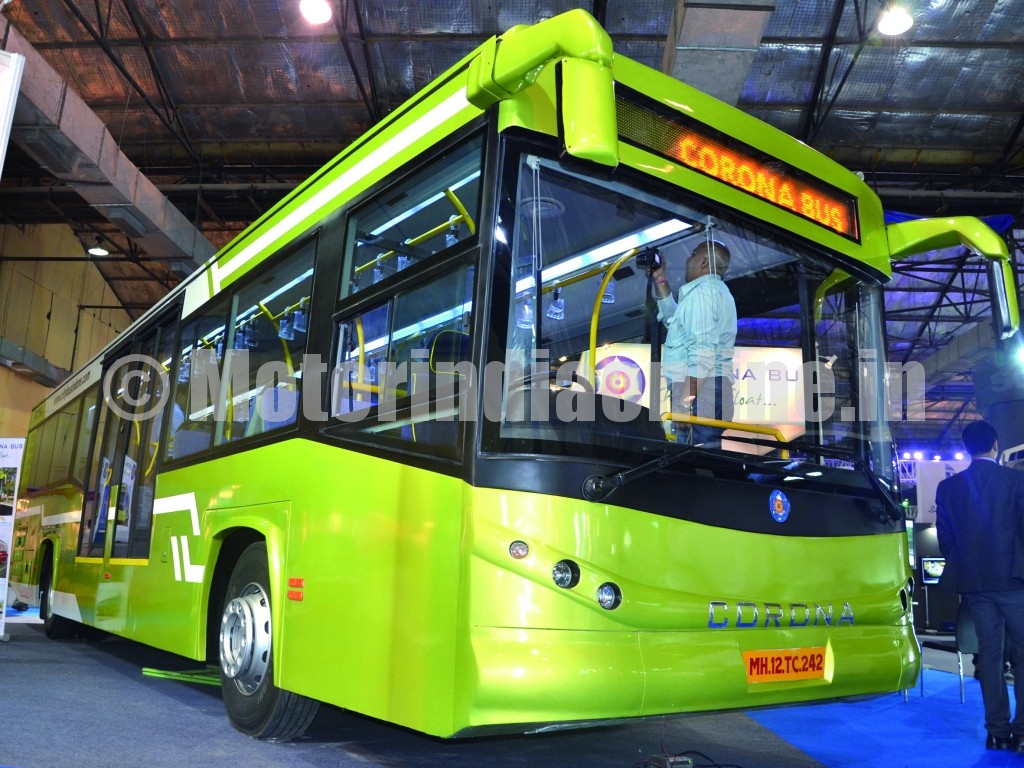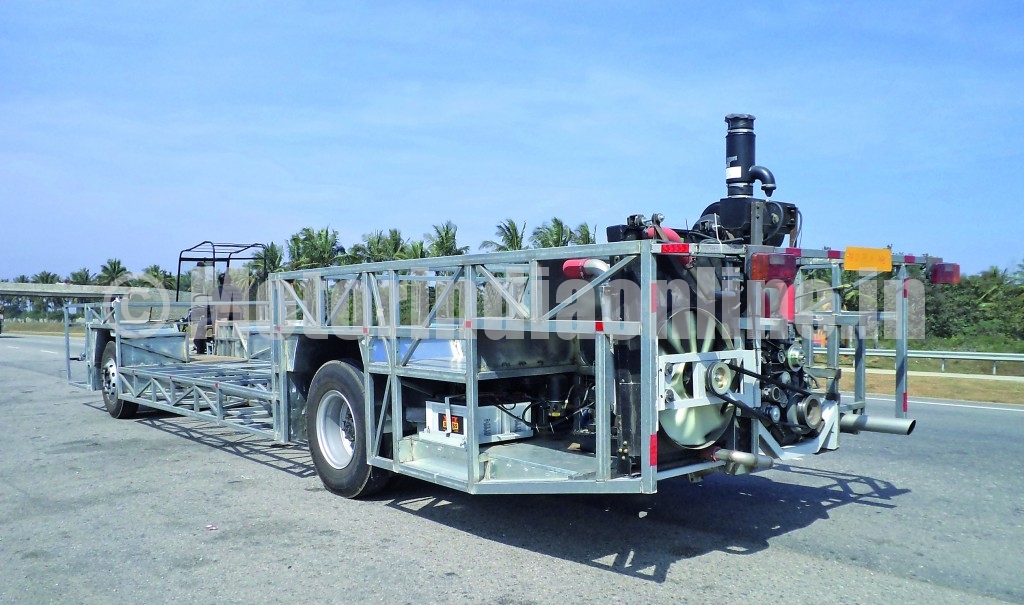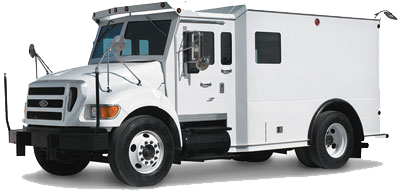Corona Bus riding successfully on monocoque technology
Corona Bus Manufacturers Pvt. Ltd. was established by Mr. Sridhar S. Kalmadi in 2004 with a vision of designing and manufacturing ‘true passenger buses’ to suit the Indian road and operating conditions. Over the last decade, the company worked tirelessly to indigenize the monocoque space frame technology in the country and is now almost successful in its endeavour. Corona coaches have completed one million km on Indian roads and are still running in perfect condition. For a technology which is new to the country, crossing a million km is an achievement indeed. Motorindia caught up with Mr. Rohit Krishna Parigi, Vice President, Corona Bus Manufacturers Pvt. Ltd., to find out more.
The company is buoyed by the performance of its products while its customers are extremely satisfied as well. Reaching the one million km mark has earned the confidence of existing customers while potential customers are also considering adoption of the monocoque technology. With a strong focus on offering the best return on investment (ROI) to customers, Corona seems to have got the formula right in a cost-conscious market such as India. Its products offer such an excellent ROI that some STUs call it the ‘ROI machine’ as they have recovered the entire product and operating cost within 18-22 months.
Says Mr. Parigi: “We focus on the life cycle cost for a period of over one million kilometers. Last month, our coaches completed one million kilometers in Indian conditions and during this period the service and maintenance costs have been very low, giving the STUs a fantastic ROI.”
Corona has bagged tenders worth over Rs. 90 crores from Janmarg (Ahmedabad Bus Rapid Transport System project) and AICTSL (Indore BRTS project) in its very first year after the JnNurm certification. The delivery of 100 buses for Ahmedabad and 50 buses for Indore will commence in May next.
The company initially entered the bus market with sleeper coaches and bagged its first-ever order for 70 sleepers in Bangalore. It has also recently concluded a deal for supplying sleeper coaches to Pune.
In the coming months, one could spot India’s first rear-engine vestibule bus, 18 m long, manufactured by Corona, running on the roads of Ahmedabad. The vestibule bus is fitted with a Hubner articulation system which is known for its excellent quality.
Corona’s product range includes city buses, sleeper coaches, inter-city coaches, midi buses, double-decker buses, vestibule buses and special-purpose vehicles. With its 12 m inter-city coach doing well, the company has recently designed a 9 m coach, with a 14 m coach coming up in future. In the city bus segment, it offers 900 mm and 740 mm floor height models, while prototypes are ready for a 650 mm version. Owing to the monocoque design, its city buses offer the broadest gangway width and are completely step-less from front to rear. Corona now wants to bring out a 400 mm floor height city bus on monocoque platform, which is a technically challenging project.
Robust technology
While monocoque technology has been proven in markets like Europe, it is yet to make inroads in the Indian market. However, Corona has made much headway in bringing the technology to India and is confident that it is only a matter of time that customers would appreciate the advantages of a monocoque design.
The company buses come with a front-independent air suspension which is very different from a normal air suspension. The front-independent type suspension greatly reduces swinging within the bus, and also minimizes the impact on passengers when a single wheel runs on a pot-hole or a raised surface.
In-built ABS is a standard fitment in its products which are known for the ease of repair and maintenance. The buses have a rear-engine with options of 180, 210, 240, 280 and 310 hp offered. Moving forward, Corona will do away with the 180 hp engine, making the 210 hp engine a standard fitment in its base models.
Corona buses come with aggregates from globally-renowned suppliers. “Today we work with the best of suppliers for our products. Our city buses come with Allison automatic transmission, Voith retarder, Cummins engine, Meritor axles and ZF steering system. We have proprietary for our suspension and space-frame design and have applied for copyrights and patents as well”, says Mr. Parigi. Corona genuine parts are available for replacing parts which are also interchangeable with other parts in the market.
The company is looking at building integral coaches on a monocoque space frame as well, for which body-building would be done by coach builders, with quality standards monitored by Corona. “We are ready to work with coach builders as consortium partners, to build bus bodies on a drive-away monocoque integral platform, as many builders are already integrated into the STUs in different States. We have done our first such buses in Karnataka with KMS Coach Builders and have had excellent results. We are looking at tying up with coach builders across the country who will set up their service centres at strategic locations”, he says.
At present, Corona buses are built at its 20,000 sq. ft. facility in Pune where it manufactures around 15 to 20 buses every year. The monocoque space frame structure is built in-house, while operations such as panel laying and painting are outsourced as per the company’s quality standards and also tested thoroughly.
With growing demand, the company is gearing up to manufacture 15 to 20 buses per month by setting up a new 60,000 sq ft. unit near its existing facility. The new unit is scheduled to be operational by September next, giving the company total capacity to roll out around 30 buses per month from the two plants. On the financial front, the company is witnessing an increase in the number of financiers for its products as a result of the years of efforts put in to successfully establish a concept in the market.
With the bus segment poised to witness enormous growth in the coming years, Corona has the right products to make it big in the Indian market. Mr. Kalmadi has shown a lot of patience and perseverance and has overcome challenges in successfully bringing the monocoque technology to India. At this rate, more monocoque buses will hopefully be plying on Indian roads before long.
Monocoque Space Frame Design – Technology Highlights:
• Monocoque structure – Increases passenger safety
• Lower centre of gravity – Better on road stability
• Front-independent air suspension – Enhances passenger comfort
• Higher power to weight ratio – One tonne lighter, more fuel efficient
• Rear engine – reduces transmission loss
• Low cost of spare parts and ease of maintenance – Highly cost effective
Corona Bus riding successfully on monocoque technology - Motorindia
__________________

 .
.






















 14 months waiting period for delivery after booking in Bangalore, waiting from 3 months even after recommendations.
14 months waiting period for delivery after booking in Bangalore, waiting from 3 months even after recommendations.










